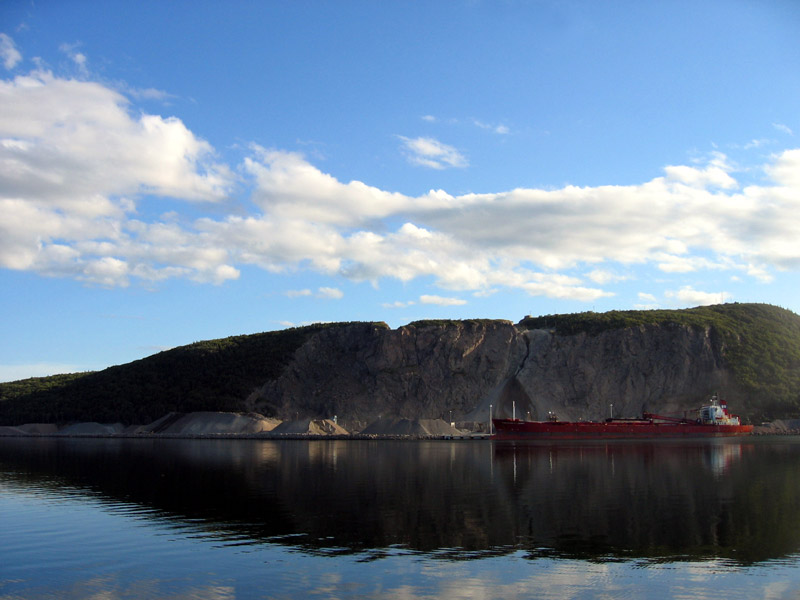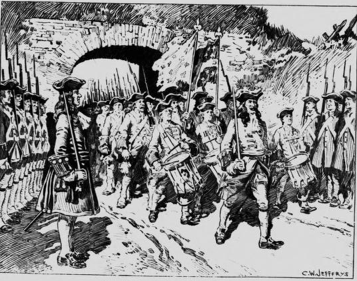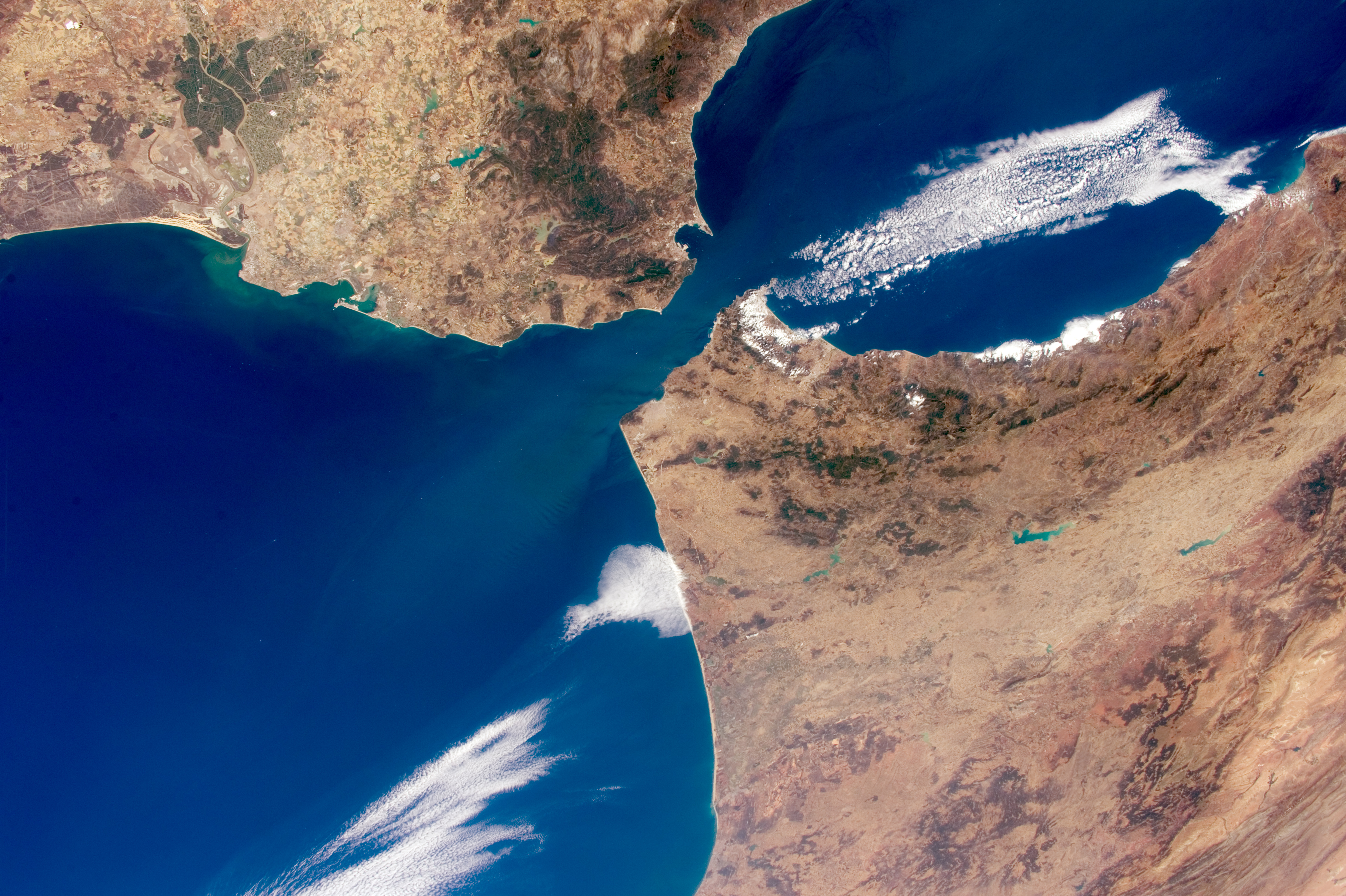|
Strait Of Canso
The Strait of Canso (also Gut of Canso or Canso Strait, also called Straits of Canceau or Canseaux until the early 20th century) separates mainland Nova Scotia and Cape Breton Island, in eastern Canada. It is a channel approximately 27 kilometers long and averaging 3 kilometers wide (1 km at its narrowest). The strait connects Chedabucto Bay on the Atlantic Ocean to St. George's Bay on the Northumberland Strait, a subbasin of the Gulf of St. Lawrence. The strait is (200+ feet) deep, with two significant communities at Port Hawkesbury on the eastern side facing Mulgrave on the western side, both ports. The strait is crossed by the Canso Causeway for vehicular and rail traffic, opened in 1955. The Canso Canal The Canso Canal is a short canal located in Nova Scotia, Canada. Canal location The Canso Canal is in the Strait of Canso, on the eastern side of the Canso Causeway, a rock-fill causeway which opened in 1955 to carry a 2-lane highway and a si ... allows shi ... [...More Info...] [...Related Items...] OR: [Wikipedia] [Google] [Baidu] |
Nova Scotia
Nova Scotia is a Provinces and territories of Canada, province of Canada, located on its east coast. It is one of the three Maritime Canada, Maritime provinces and Population of Canada by province and territory, most populous province in Atlantic Canada, with an estimated population of over 1 million as of 2024; it is also the second-most densely populated province in Canada, and second-smallest province by area. The province comprises the Nova Scotia peninsula and Cape Breton Island, as well as 3,800 other coastal islands. The province is connected to the rest of Canada by the Isthmus of Chignecto, on which the province's land border with New Brunswick is located. Nova Scotia's Capital city, capital and largest municipality is Halifax, Nova Scotia, Halifax, which is home to over 45% of the province's population as of the 2021 Canadian census, 2021 census. Halifax is the List of census metropolitan areas and agglomerations in Canada, twelfth-largest census metropolitan area in ... [...More Info...] [...Related Items...] OR: [Wikipedia] [Google] [Baidu] |
Canso Canal
The Canso Canal is a short canal located in Nova Scotia, Canada. Canal location The Canso Canal is in the Strait of Canso, on the eastern side of the Canso Causeway, a rock-fill causeway which opened in 1955 to carry a 2-lane highway and a single rail track from Cape Breton Island to mainland Nova Scotia. The canal was built through Balache Point in Inverness County. The causeway completely blocks the Strait of Canso, which links the waters of St. George's Bay in the Northumberland Strait, a sub-basin of the Gulf of St. Lawrence, with Chedabucto Bay on the Atlantic Ocean. Canal dimensions The canal, constructed between 1953 and 1955, is wide and long, with a minimum depth of . It has a single Seawaymax lock to account for tidal differences; any vessel capable of transiting the St. Lawrence Seaway will fit through the Canso Canal. The Canso Canal Bridge is a swing bridge which carries the Trans-Canada Highway and a railway line across the canal immediately south of ... [...More Info...] [...Related Items...] OR: [Wikipedia] [Google] [Baidu] |
Landforms Of Richmond County, Nova Scotia
A landform is a land feature on the solid surface of the Earth or other planetary body. They may be natural or may be anthropogenic (caused or influenced by human activity). Landforms together make up a given terrain, and their arrangement in the landscape is known as topography. Landforms include hills, mountains, canyons, and valleys, as well as shoreline features such as bays, peninsulas, and seas, including submerged features such as mid-ocean ridges, volcanoes, and the great oceanic basins. Physical characteristics Landforms are categorized by characteristic physical attributes such as elevation, slope, orientation, structure stratification, rock exposure, and soil type. Gross physical features or landforms include intuitive elements such as berms, cliffs, hills, mounds, peninsulas, ridges, rivers, valleys, volcanoes, and numerous other structural and size-scaled (e.g. ponds vs. lakes, hills vs. mountains) elements including various kinds of inland and oceanic waterbodi ... [...More Info...] [...Related Items...] OR: [Wikipedia] [Google] [Baidu] |
Straits Of Nova Scotia
A strait is a water body connecting two seas or water basins. The surface water is, for the most part, at the same elevation on both sides and flows through the strait in both directions, even though the topography generally constricts the flow somewhat. In some straits there is a dominant directional current. Most commonly, the strait is a narrowing channel that lies between two land masses. Straits are loci for sediment accumulation, with sand-size deposits usually occurring on the two strait exits, forming subaqueous fans or deltas. Some straits are not navigable because, for example, they are too narrow or too shallow, or because of an unnavigable reef or archipelago. Terminology The terms '' channel'', ''pass'', or ''passage'' can be synonymous and used interchangeably with ''strait'', although each is sometimes differentiated with varying senses. In Scotland, '' firth'' or ''Kyle'' are also sometimes used as synonyms for strait. Many straits are economically impor ... [...More Info...] [...Related Items...] OR: [Wikipedia] [Google] [Baidu] |
Mander Family
The Mander family has held for over 200 years a prominent position in the Midland counties of England, both in the family business and public life. In the early Industrial Revolution, the Mander family entered the vanguard of the expansion of Wolverhampton, on the edge of the largest manufacturing conurbation in the British Isles. Mander Brothers was a major employer in the city of Wolverhampton, a progressive company which became the Number One manufacturers of varnish, paint and later printing ink in the British Empire. The family became distinguished for public service, art patronage and philanthropy. Charles Tertius Mander (1852–1929) was created the first baronet of The Mount in the baronetage of the United Kingdom in the Coronation honours of George V, on 8 July 1911. Early history The family were franklins, settled by 1291 at Tredington on the Warwickshire/Worcestershire borders of Midland England. The Wolverhampton family descends from Henry Mander (1601–72), ... [...More Info...] [...Related Items...] OR: [Wikipedia] [Google] [Baidu] |
Henry Nicholas Paint
Henry Nicholas Paint (10 April 1830 – 29 September 1921) was a Canadian politician, shipowner and merchant. Career Henry Paint was the son of Nicholas Paint, JP, by Mary Le Messurier, both of old Guernsey families which had been trading with Nova Scotia since at least the mid-18th century; a 'Paint Island', off Canso, is recorded in 1750.''Expeditions of Honour: the journal of John Salusbury in Halifax, Nova Scotia, 1749–53'', p. 87, ed. R. Rompkey, 1982 In 1817 his father, a merchant shipowner and agent at Arichat, Nova Scotia, petitioned for land grants at Belle Vue on the Strait of Canso, where he built a stone house and settled by 1822. Henry was educated in Guernsey and at the Wolfville Academy (today Acadia University), and served 1853-69 as a lieutenant-captain in the Canadian Militia during the Fenian raids. He spent his early life as an insurance and commission agent in the City of Halifax. He was elected to the House of Commons of Canada in 1882 as a Member ... [...More Info...] [...Related Items...] OR: [Wikipedia] [Google] [Baidu] |
Canso Causeway
The Canso Causeway () is a rock-fill causeway crossing the Strait of Canso, provides access by road to the Atlantic Ocean, to the Gulf of St. Lawrence or Cape Breton Island to the Nova Scotia peninsula. Its crest thickness is , carrying the two vehicle traffic lanes of the Trans-Canada Highway, Nova Scotia Highway 104 on the mainland side, and Nova Scotia Highway 105 on the Cape Breton side, as well as the single track mainline of the Cape Breton and Central Nova Scotia Railway. The causeway opened in 1955 after three years of construction. Constructed in an "S" shape, it has a base width of in waters having a maximum depth of . Cape Breton Island remains circumnavigable as a result of the wide and long Canso Canal, which is located at the eastern end of the causeway to allow ship traffic to transit the Strait of Canso. The Canso Canal Bridge is a swing bridge which carries the road and railway line across the canal. The word "Canso" is believed to be derived fr ... [...More Info...] [...Related Items...] OR: [Wikipedia] [Google] [Baidu] |
Cape Breton Island 3
A cape is a clothing accessory or a sleeveless outer garment of any length that hangs loosely and connects either at the neck or shoulders. They usually cover the back, shoulders, and arms. They come in a variety of styles and have been used throughout history for many different reasons. Semantic distinction In fashion, the word "cape" usually refers to a shorter garment and "cloak" to a full-length version of the different types of garment, though the two terms are sometimes used synonymously for full-length coverings. A shoulder cape is thus sometimes called a "capelet". The fashion cape does not cover the front to any appreciable degree. In raingear, a cape is usually a long and roomy protective garment worn to keep one dry in the rain. History The first known usage of capes is unknown, but some early references we know of are from Ancient Roman military uniforms. Later on, capes were common in medieval Europe, especially when combined with a hood in the chaperon. They ... [...More Info...] [...Related Items...] OR: [Wikipedia] [Google] [Baidu] |
Mulgrave, Nova Scotia
Mulgrave is an incorporated town on the Strait of Canso in Guysborough County, Nova Scotia, Guysborough County, Nova Scotia, Canada. Located along the Marine Drive (Nova Scotia), Marine Drive, Nova Scotia Route 344, Route 344 traverses the community. The town's current name was adopted in 1859 to honour the colonial Lieutenant Governor, the George Phipps, 2nd Marquess of Normanby, Earl of Mulgrave. Lying opposite to the town of Port Hawkesbury, the community is located along the western shore of the Canso Strait. It was established as McNair's Cove in the early 19th century, and the name Port Mulgrave was adopted in 1859, later shortening to its current form. The early industry of the community relied on ferry service between the Nova Scotia mainland and Cape Breton Island. Ferry service began in the 1810s and rail service reached the area in the 1880s. The ferry services lasted until the opening of the Canso Causeway in 1955, dealing a major blow to the local economy. As of 2021 ... [...More Info...] [...Related Items...] OR: [Wikipedia] [Google] [Baidu] |



